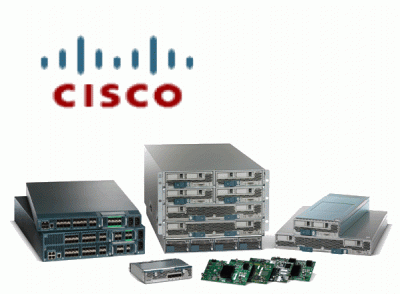Cisco Unified Computing System Review

For IT managers who must pay attention to both virtual and physical resources, the Cisco UCS system is well worth considering
Fabric Interconnects
The Cisco UCS 6120XP Fabric Interconnect is a 1U top-of-rack device that provides Ethernet and Fibre Channel connectivity between the blade servers in the chassis and the LAN or SAN resources.
The Fabric Interconnect can be configured with a variety of expansion modules depending on the LAN and storage resources that are available to the servers. Of importance for IT managers is that at least one and not more than two UCS 6120XP Fabric Interconnects can provide consolidated 10 Gigabit Ethernet, 1G-, 2G- and 4G-bps Fibre Channel connectivity for high-performance, low-latency applications.
The Fabric Interconnect is the basis of a USC management domain with a theoretical limit of 40 blade chassis and up to 320 servers. My test environment at Cisco’s demonstration lab was much more modest, composed of a single chassis with five blade servers.
The Fabric Interconnect plays a central role in Cisco UCS. Aside from providing the physical interconnect between the blade servers and the LAN and SAN resources, the Fabric Interconnect is also the management “brain” of the Cisco UCS.
My test environment used two UCS 6120XP Fabric Interconnects for redundancy and increased throughput. The Fabric Interconnects were equipped with N10-E0080 expansion modules that provided eight 4G Fibre Channel uplinks. Other expansion modules are available and can provide either four or six 10G uplinks.
In my test environment, the UCS 6120XP Fabric Interconnects were connected to a Cisco Catalyst 3750 switch for LAN resources and an MDS 9506 Multilayer Director SAN switch for access to a variety of storage resources.
Software Components
The integrated hardware would be elegant but incomplete without the Cisco UCS Manager software application. The UCS Manager lives in the UCS 6120XP Fabric Interconnect. As was mentioned previously, the UCS Manager is a device manager that provides discovery and monitoring features, as well as low-level configuration support for the hardware and logical components that make up the Cisco UCS.
During my tests, this meant that I was able to use the UCS Manager to provide low-level identifiers that are normally burned into hardware devices, such as a MAC on a network interface card, to mask physical changes in the network from operating systems and hypervisors running on that hardware.
For example, I was able to use VMotion to move a virtual machine from a VMware ESX Server running on one physical blade server to another, change out the physical blade for one with more RAM and a faster processor, and then migrate the blade back without the VMware ESX Server knowing that it was moving onto a physically different server. In other words, when physical actions are required, either to recover from hardware failure or to facilitate an upgrade, they can be performed in a non-disruptive manner to the operating system or hypervisor.
The UCS Manager interface is divided into five areas: administration, equipment, servers, LAN and SAN. Administration covers the operation of UCS Manager; equipment generally refers to the actual, physical UCS equipment; servers generally covers the logical entities that are created and used in UCS Manager; LAN refers to networking; and SAN refers to storage resources.